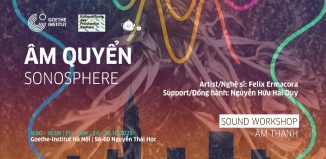KVT – Drop Dead Gorgeous and Dynamism in the New Concert Hall

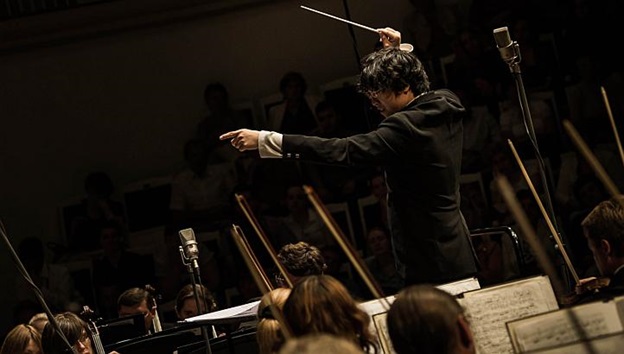
KVT gets into a Rach-fest with Kah Chung Wong, Ayako Uehara and the VNSO

Arrived back in Hanoi after a five week Tet holiday to the residue of mua phun and mua xuan- that drizzly rain that never seems to stop and that encourages epidemics of mould and its sour-sweet, pervasive aroma that penetrates deep into fabrics, bedding, and upholstered furniture and that can only be expelled by exposure to bursts of brilliant sunshine.
Sometimes, this drizzle conjures up a mouldy melancholy that takes hold of me and only exposure to those brilliant bursts of sunshine can restore equilibrium of optimism
On Saturday night at the supa doopa, sparkly new Concert Hall at the Vietnam National Academy of music a series of brilliant burst of sunshine finally dispelled my moldy melancholia that had had me focusing pessimistically on Hanoi’s grubbier aspects.
First burst of brilliant sunshine was an open smiled welcome from my local hero, maestro Tetsuji Honna, music director, principal conductor of and principal driving force behind the Vietnam National Symphony Orchestra. Honna had surrendered his baton for the night to Singaporean wunderkind Kah Chun Wong who, although he looks like a teenager, assured me that he is really and truly 29
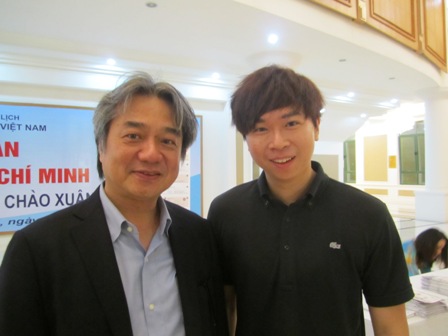
An anticipated brilliant burst of sunshine was due to my research into this young man’s credentials and found out that he’d won 1st prize at a prestigious conducting competition in Bucharest in 2013 and for the 2013/14 season was the cover conductor for the Atlanta Symphony as well as having a guest gigs with important orchestras in Berlin, St Petersburg, Beijing, London, Argentina and Romania.
Brilliant burst of sunshine two was the spectacle of the sparkly marbled foyer of the concert hall and ascending the chandeliered staircase to the auditorium
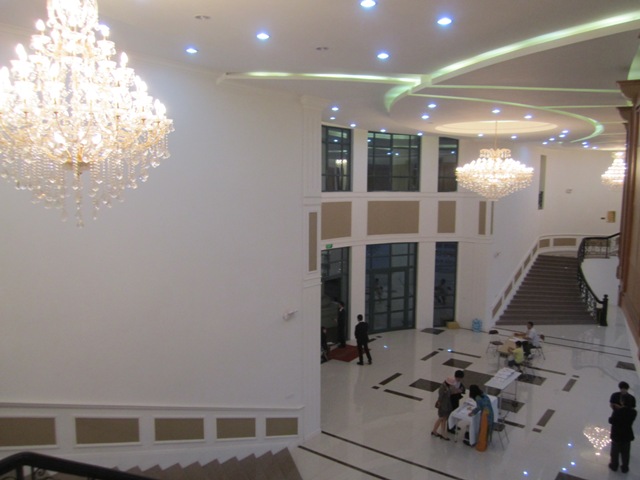
Absolutely brilliant burst of sunshine three. I’d deliberately got to the venue early so that I could take in the yellow gold and red of the new concert hall which is definitely world class in appearance and design
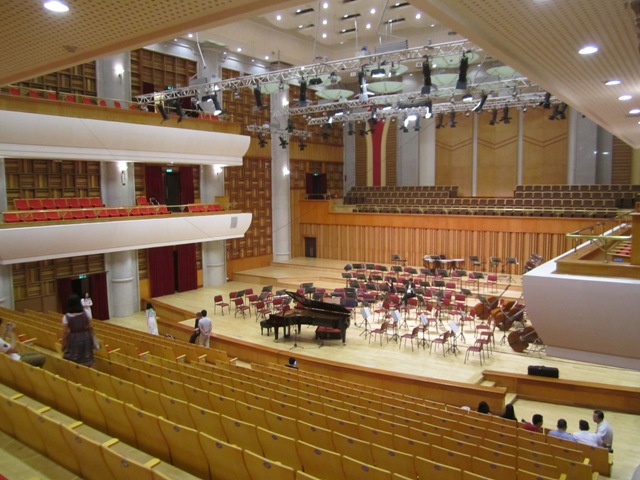
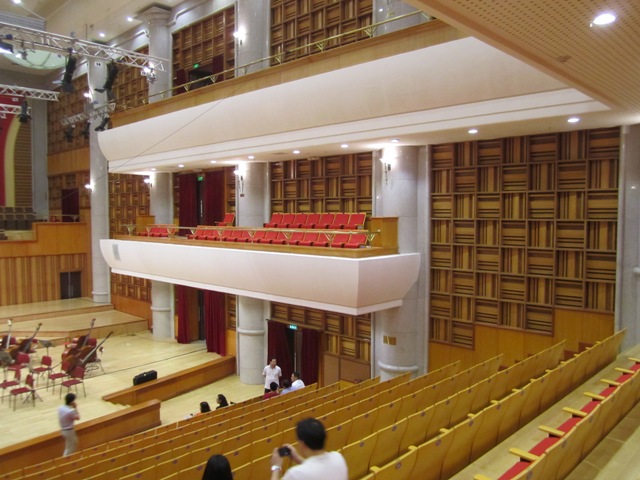
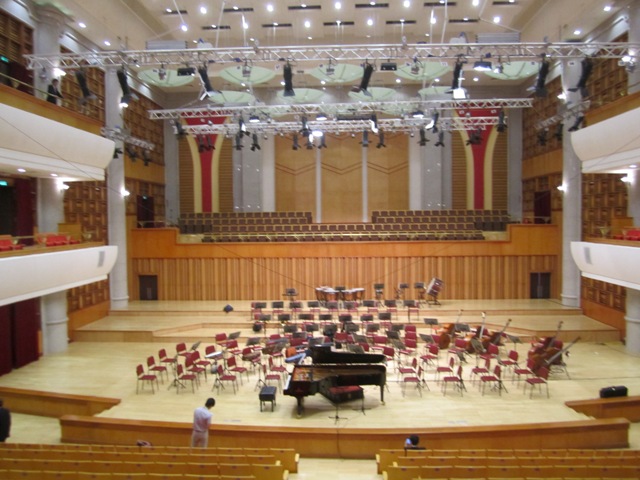
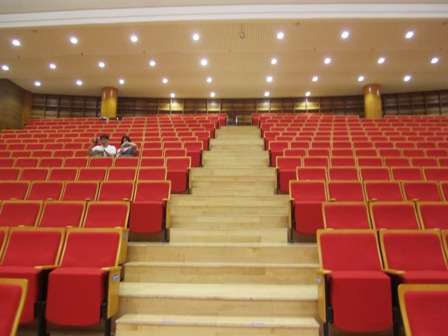
Another anticipated brilliant burst of sunshine: were the two works by Rachmaninov that were coming up…compositions that, if well performed, are real melancholia busters. Sergie Rachmaninov had his personal seasons of melancholy and was considered to be a dour man but his philosophy about his music was I try to make music speak simply and directly that which is in my heart at the time I am composing. If there is love there, or bitterness, or sadness, or religion, these moods become part of my music, and it becomes either beautiful or bitter or sad or religious.
Both of his SECONDS (the second Piano Concerto and the Second Symphony) which were about to be played contain some of the most sublime tunes ever composed.
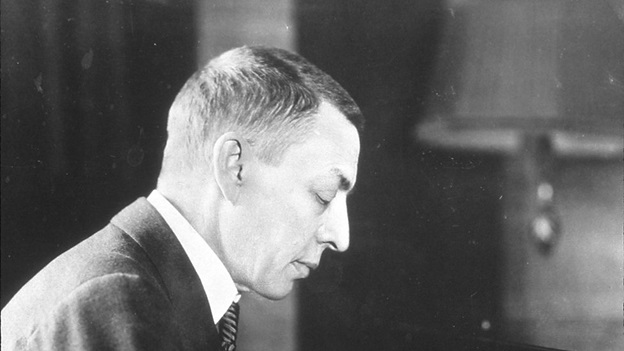
Scintillatingly brilliant burst of sunshine three began to spin its spell over the concert hall for about 40 minutes when diminutive wunderkind Japanese pianist Uehara Ayako took her seat at the grand piano for Rach’s Piano Concerto No 2 and played eight ascending bell like chords that led into the main theme which is taken up by the whole orchestra. It’s one of those melodies that is instantly recognizable. When she moved into the second theme, one of Rachmaninov’s most popular, she had the audience at her feet
The orchestra was in fine form and the occasional brassy blart from some brass didn’t deter from those expressive and nimble fingers that plunged, flew and danced over the keyboard.
Both of the SECONDS are punctuated with what one critic calls DROP DEAD GORGEOUS MELODIES that are sometimes so familiar to audiences due to their appropriation by movies, TV shows, commercials that it takes a high flying performance by an orchestra led by a dynamic conductor to make them all sound fresh and new – and this is what the youthful interpretation by Ka Chun Wong delivered to us
When, near the end of the movement, a wonderful horn solo heralds a quiet piano interlude with a lone violin singing above, shivers ran up and down my spine….This sensation recurred early into the slow second movement when he piano accompanied a lone flute and clarinet to introduce the primary melody.
In fact the whole performance was spine tingling and the lyrical second theme in the last movement which is just about the most romantic and best-loved melody in the entire orchestral literature, really makes you melt with satisfaction as the piano takes it over from the violas. The same feeling again, later, when the violins reintroduce the melody and hand it back to the pianist for a timorous solo before building towards an ecstatic, full orchestral swoon time moment that mounts to an all stops out, whirling, electrifying conclusion that made me want to yell with the joy of it all
Loads of curtain calls and bravos!
The pianist (don’t confuse her with another Japanese woman with the same name who is a world champion golfer) got her start into the big time international concert circuit when she won 2nd prize in the 2000 Sydney International Piano Competition, got 1st prize in Leeds in 2001 and put lashings of cream on the top of her reputation when she became the first woman to win the Tchaikovsky Piano Competition in Moscow in 2002
Her performance trajectory missiled into heady stratospheres with gigs with some of the world’s foremost orchestras and recording companies.
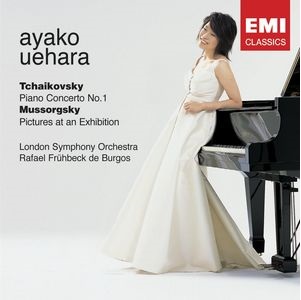
We were supremely lucky to have her call into Hanoi as part of a tour to our Asian region and if I knew who to thank sponsoring visit I’d just about put it up in flashing led light.
A that su tuyet voi (over the top) hour long burst of brilliant sunshine four came when the orchestra tuned up after interval and maestro Wong took to the podium and asked the cellos and basses to take us deep down into a space of uncertainty and tension. Just when the gloom seemed too pervasive a couple of those gorgeous melodic streams pushed it aside and let a bit of hope in.
Some commentators say that the work is biographical and that the first movement describes the composer’s fear and uncertainty at leaving Russia after the 1905 revolution while the second movement describes feelings of flight and optimistic hopes for the future.
Drop dead gorgeous is all you can say about the main melody that the horns initially lead the violins into. A tune you wish could go on forever.
VNSO really got all the sparks and color and passion just about spot on and got better and better as the symphony progressed and by time we got to the abrupt, loud bang that made a lot of us jump in our seats, the whole caboodle was in top form..
If there was anyone in the audience not yet enthralled then the following slow movement would have curled its soft tentacles around them. It is full of regret and sadness for what must be left behind and is so beautiful that you push into it as a small child does the comforting bosom of its mother when seeking total comfort and reassurance.
Just when you think it couldn’t possibly go further in swoon and gorgeousness the last movement pitches us headlong into another of Rachmaninov’s really big tunes, one you couldn’t help but hum as you left the venue.
The entire orchestra got a thorough workout. Pounded along by a fabulous tympani and led by an effervescent conductor any remaining shreds of melancholy were scattered to the winds. Near the end when my ears were deluged by a swirl of sound that made it seem that a host of cathedrals’ bells were ringing and that drop dead gorgeous big tune is reprieved in a blood spinning finale I knew that we’d experienced one of those nights of classical music that remains in your memory- not so much for perfection, but for dynamic freshness.
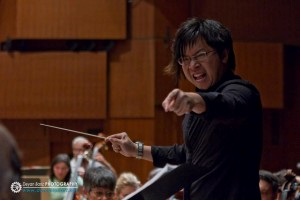
TO THOSE MEMBERS OF THE AUDIENCE WHO HAD TO PUT UP WITH A FEW FRACTIOUS BRATS WHOSE PARENTS SOULD BE SOUNDLY SPANKED FOR BRINGING THEM; AND THOSE LATE COMERS WHO ARE ALLOWED INTO THE AUDITORIUM BETWEEN MOVEMENTS BY THE CONCERT HALL MANAGEMENT WHO ALSO SHOULD BE RESOUNDINGLY SPANKED -AND WHO ALMOST PUT THE KYBOSH ON THE PIANO SONATA’S FIRST MOVEMENT- I EMPATHISE, AND ADMIT THAT I SOMETIMES HAD TO PUT MY SELECTIVE HEARING INTO OVERDRIVE!
| Kiem Van Tim is a keen observer of life in general and the Hanoi cultural scene in particular and offers some of these observations to the Grapevine. KVT insists that these observations and opinion pieces are not critical reviews. Please see our Comment Guidelines / Moderation Policy and add your thoughts in the comment field below. |



